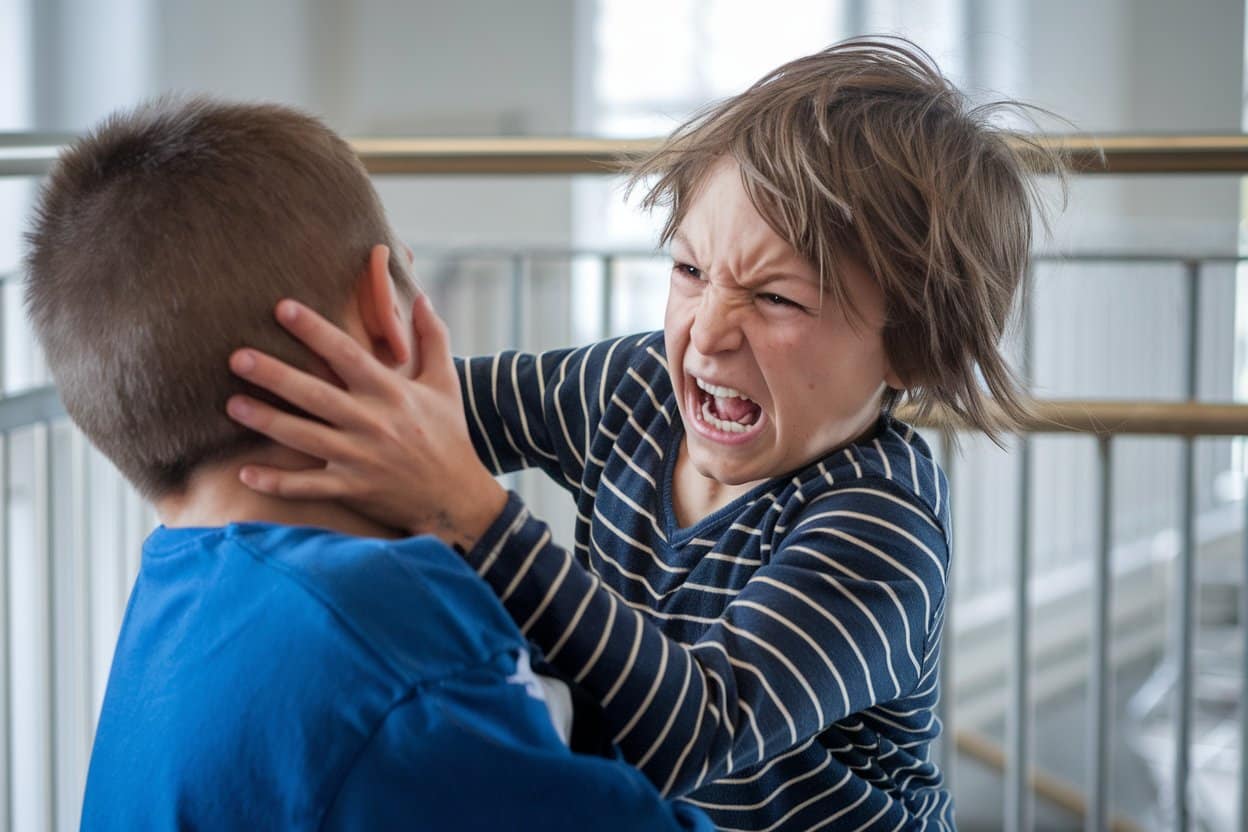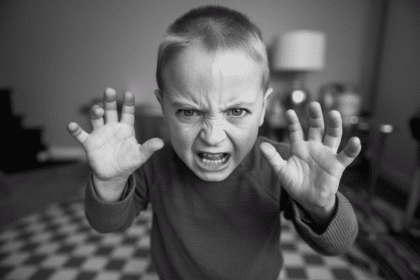At the heart of positive parenting lies a deep emphasis on respect and care for children. We believe that a child's well-being thrives in an environment of love and respect, not just for them, but for everyone around them. Understanding that expressions of anger and even aggression are natural for both children and adults is key. It's why we, as parents and caregivers, guide our kids to express those feelings constructively, without resorting to blame, threats, or punishment. Instead, we focus on offering positive outlets for their emotions. This is all about nurturing a compassionate and well-rounded child.
Why is Hitting a Concern? A Normal Instinct
You might be asking, “If feelings like anger are natural, why are we so concerned about kids hitting?” It's a valid question. The truth is, the urge to react physically, especially when feeling threatened or protective, is actually quite normal. Have you ever felt that impulse to lash out when someone cuts you off in traffic or mistreats a child? It's a primal instinct, a natural human reaction. That “fight or flight” instinct kicks in – it’s deeply ingrained within us.
However, as a society, we've established rules and norms that discourage physical violence as a means of getting what we want or expressing our anger. We live in community, not isolation, and these codes of conduct are what make civilized society work. Therefore, teaching your child that these behaviors are not acceptable in our modern world is a critical piece of their development. It is part of equipping them to become responsible and respectful members of their communities.
Our Role as Parents: Protection and Guidance
Let's not forget that at the core of parenting is protection. Just as we wouldn't let a toddler wander into a busy street alone, we also wouldn't ignore it if they started hitting another child or throwing things in anger. When children hit without just cause, it is our job to help them learn other ways of expressing themselves and dealing with their emotions. In this sense, we are protecting them from the potential repercussions of hitting. This is an essential part of the growing up process.
Hitting out not only hurts others; it can also be detrimental for the child who hits because it can lead to a cycle of rejection or retaliation from peers. Learning to manage complex feelings is a fundamental part of social emotional learning, and to do this, we have to actively guide our children as they grow.
Reframing Aggression: Finding Constructive Outlets
It helps to reframe our understanding of why children hit. Kids often hit because they haven’t yet developed the verbal skills or emotional intelligence to communicate their frustration, anger, or fear. Sometimes a child hits when they are feeling ignored or overwhelmed. They might be seeking attention or acting out because they feel they have no other way to make their feelings known. Simply telling them “don’t hit” isn’t enough. We must actively assist them by teaching that it is okay to have these intense emotions. However, we also have to teach them *how* to express themselves without resorting to violence.
Strategies for Guiding Children Away from Hitting
Here are some key strategies that you can use to teach your child how to handle their feelings in a productive way:
1. Validate Their Emotions:
Start by acknowledging and validating the child’s feelings. Instead of saying, “Don't be angry,” try, “I can see you're really upset right now.” This helps the child feel heard and understood, which is the first step towards managing those feelings. For example, if a child is upset because another child took their toy, you might say, “I understand you are upset. You were playing with that toy, and now someone else is too.” Try to refrain from saying things like, “You should not be upset” as this undermines their genuine feelings.
2. Teach Emotional Literacy:
Help children learn to identify and label their emotions. You can do this by pointing to non-verbal cues, such as clenching fists or furrowed brows. Reading storybooks together is good for this as well, because it provides examples of different emotions and how those characters dealt with them. Then, you can teach your child the words to put with those feelings. For example, “When you stomp your feet like that, it looks like you are frustrated.” As children learn to recognize their emotions, they become more equipped to manage them in a suitable way.
3. Offer Alternative Behaviors:
Provide your child with alternative ways to express their anger and frustration. This might include taking deep breaths, stamping their feet, squeezing a soft toy, drawing a picture, or using their words to express how they feel. Offer age-appropriate solutions, and make these a regular part of your routine. This could mean having a “calm down” kit for children to have at their disposal. When you see that they might be getting upset, direct them to using their calm down choices, before reaching the point of hitting.
4. Model Appropriate Behavior:
Children learn by watching the adults in their lives. If you express your own anger in a calm and respectful way, your child is more likely to do the same. This doesn’t mean holding back all emotions, as this would not be an example of authentic communication. It does mean modeling that even though you feel angry, you can choose to speak calmly, or take a breather rather than letting your hands carry out your emotions. By using a calm voice and thoughtful actions, they will see that it is possible to express emotions and still be in control.
5. Consistent and Gentle Guidance:
Consistency is vital when teaching children new behaviors. Gently but firmly redirect your child if they hit or are about to hit. For example, if your child gets angry at a friend and raises their hand, you can say “I can see you're really angry at your friend, but we don't hit. Let's instead tell them how you are feeling, or we can take a break.” If you catch them in the moment before a hit, you could say ” I see you are feeling frustrated, but I can see you’re about to hit. And we don’t hit. Let’s think about what else you could do” Be firm in stating that hitting is not okay but do so with compassion and understanding. Be mindful not to resort to punishment as often, this is not productive, this is simply about coaching your child to handle their emotions more appropriately.
6. Practice Conflict Resolution Skills:
Teach your children basic conflict-resolution strategies such as talking calmly, listening to the other person's perspective, and finding compromises. You can role-play these skills with your child so they can gain understanding and perspective of all of the parts involved in addressing a difficult situation. You can make this a regular part of playtime or family conversations. When disagreements arise, these techniques can help your child choose the behavior that does not cause pain to others.
7. Focus on Empathy:
Help children develop empathy for others by asking them how they think the other person might feel when hit. This helps them see things from the other person’s point of view. It prompts them to consider the consequences of their actions, and promotes sensitivity towards others. For example, you might ask “How do you think they felt when you hit them?” This is all about teaching your children to respect others, but also how to be more resilient, themselves in the world.
A Journey of Growth, Not Perfection
Remember that teaching children not to hit is a gradual process. It's not about expecting perfection overnight but about guiding them towards growth and awareness. The goal isn't to eliminate anger; it’s about helping our children understand and manage these complex feelings in a healthy way. Be patient, consistent, and offer them continued compassion and support as they develop these critical life skills.
By taking a positive approach that validates their emotions and equips them with problem-solving skills, we’re not just teaching our children not to hit, we’re also nurturing compassionate, empathetic and well-balanced individuals.











